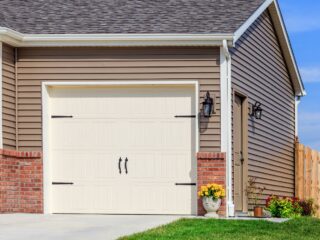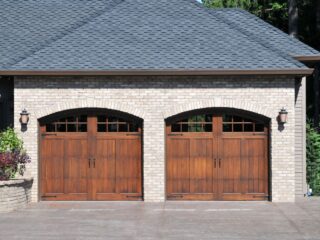
Floor Guide for Sliding Closet Doors
If you’re like me, you’ve struggled with those pesky sliding closet doors that just won’t stay on track. It’s a common issue that can turn a simple task into a daily frustration. But don’t worry, I’ve got the perfect solution for you – a comprehensive guide on floor guides for sliding closet doors.
In this article, I’ll walk you through everything you need to know about floor guides. From what they are, how they work, to how you can install them yourself. I’ll also share some of my top picks for the best floor guides on the market. So, if you’re tired of wrestling with your closet doors every morning, stick around. You’re in for a treat!
And who knows? By the end of this, you might just become an expert in sliding closet doors yourself. Let’s dive in, shall we?
Preparation Before Installing Sliding Closet Doors
Installing sliding closet doors can be a game-changer in your quest for effective space management. But before getting your hands dirty, there’s some preparation that must be undertaken to ensure a seamless installation process. This involves three major steps. Let’s check them out.
Measuring the Closet Space
The first crucial step in getting your closet doors ready for installation is precisely measuring the Closet Space. There’s no room for guesswork here. You need to measure the width, height, and depth of your closet opening. Don’t forget to also measure the side and top clearance. Avoid common measurement mistakes by confirming the dimensions from different points and note any discrepancies. This ensures a perfect fit for your doors and reduces the chances of having to make costly modifications later.
Removing the Old Flooring
Once you’re done measuring, it’s time to ready the ground. This step aligns with undertaking any refurbishment in your house. It’s likely your old closet doors sat on an existing floor. Remove this to pave way for the new sliding doors. I always advise scrubbing off remnants using a putty knife and sanding down the surface for a clean start.
Leveling the Subfloor
The final preparation phase before installing your new sliding closet doors involves leveling the subfloor. Say goodbye to your sliding door woes: uneven floors are no match for a well-leveled subfloor! I recommend sweeping the area clean first. Then, using a long leveler or straightedge, confirm if there are any depressions or humps. Fill the low spots with a floor leveling compound and sand down high spots. You’re now all set for the installation of your dream sliding closet doors.

Installing Sliding Closet Doors on Different Flooring Types
So you’ve measured your space, removed the old flooring, and leveled your subfloor. Now it’s time to discuss the specific considerations when installing sliding closet doors on different flooring types.
Installing on Hardwood Floors
When dealing with hardwood floors, your attention should focus on preventing damage to the wood. You’ll want to take an extra step before installing the floor guide by using masking tape on the area where you’ll install it. This will help reduce the risk of splitting or damaging the wood when drilling the screw holes.
Keeping in mind that hardwood floors are usually highly-polished and can be slippery, you’ll want to consider using a non-slip door guide, this will ensure that the doors stay in the grooves and slide smoothly without slipping.
Installing on Carpet Floors
The challenge with carpets is that they can make the sliding doors unstable. However, a simple solution like a metal floor guide can offer a stable track for your sliding doors to run on.
Before installing the floor guide, ensure you press the carpet down to locate a solid fitting position. You also need to cut out a space in the carpeting where you’ll fit the guide in, making sure it fits snugly for optimal stability.
Installing on Tile Floors
Tile can be a bit complicated due to its hard, brittle nature. Like hardwood, you don’t want to risk damaging the tiles while drilling holes. Therefore, I recommend using a professional tile bit to drill the holes, it’ll help you avoid cracking the tiles.
Remember to use a masonry anchor while mounting the floor guide, it helps in achieving a secure fit on the tile surface. In my experience, a combo floor guide often works best for tile surfaces due to its cushioned contact and adjustable width settings.
And there you have it. Different flooring types have different quirks that need to be addressed for a seamless installation of the sliding closet doors. We’ve discussed these for hardwood, carpet, and tile floors. Keep these in mind, and you’ll navigate the installation process with confidence and precision.





